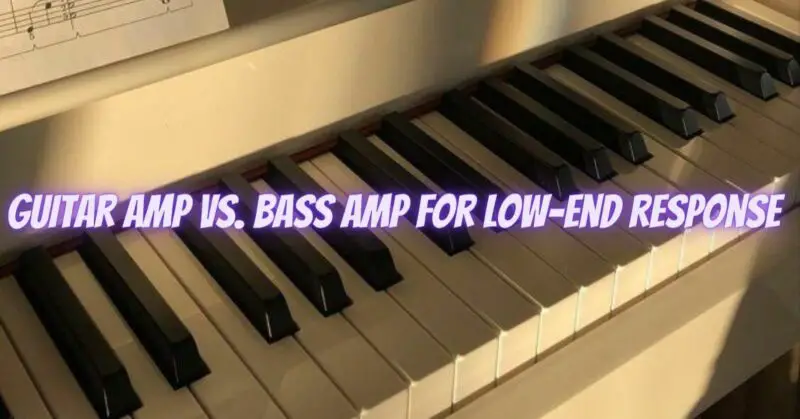When it comes to amplification, guitar and bass players have different sonic needs, particularly when it comes to low-end response. While both guitar and bass amps are designed to amplify electric instruments, their distinct characteristics make them better suited for their respective instruments. In this article, we’ll explore the differences between guitar and bass amps regarding low-end response to help you understand why each is tailored for its intended instrument.
Guitar Amps:
Guitar amps are designed to emphasize the midrange and treble frequencies, offering a wide range of tones suitable for various guitar playing styles. Here are some key points to consider regarding low-end response in guitar amps:
- Frequency Range:
- Guitar amps typically have a narrower frequency range compared to bass amps, with an emphasis on midrange frequencies, which are essential for defining the guitar’s character and cutting through a mix.
- Speaker Size and Design:
- Guitar amps often feature smaller speakers with sizes ranging from 8 to 12 inches.
- The speaker’s design is optimized for midrange and high-frequency reproduction, resulting in a crisp and articulate sound that complements the guitar’s tonal spectrum.
- Low-End Response:
- While guitar amps can produce some low-end frequencies, their primary focus is on midrange and treble.
- Guitar amps may lack the deep, resonant bass response needed for bass guitar frequencies.
Bass Amps:
Bass amps are specifically designed to handle the lower frequencies produced by bass guitars. They prioritize low-end response and provide the foundation for the band’s rhythm section. Here are some factors that contribute to the robust low-end response of bass amps:
- Frequency Range:
- Bass amps have a broader frequency range compared to guitar amps, with an emphasis on the lower frequencies that give bass guitars their distinctive sound.
- Speaker Size and Design:
- Bass amps often feature larger speakers, typically ranging from 10 to 15 inches or even more.
- These larger speakers are designed to move more air and reproduce the lower frequencies with greater efficiency.
- Low-End Response:
- Bass amps excel at delivering deep, powerful low-end response, providing the essential foundation for groove and rhythm in a band setting.
- The speaker and amplifier design of bass amps allows them to handle the higher wattages required to reproduce low frequencies accurately.
Choosing the Right Amp for Low-End Response:
When selecting an amp based on low-end response, consider the following:
- Instrument: If you primarily play guitar, a guitar amp is the best choice to complement your instrument’s midrange and treble frequencies.
- Low-End Emphasis: If you play bass guitar, a bass amp is essential to achieve the deep, rich low-end response needed for basslines.
- Playing Style: Consider your musical genre and playing style. If you play guitar and require additional low-end presence, some guitar amps have built-in features like boost switches or extended-range speakers that can help enhance the low-end response.
Conclusion:
In summary, the choice between a guitar amp and a bass amp for low-end response depends on your instrument and musical preferences. Guitar amps are optimized for midrange and treble, while bass amps excel at delivering powerful low-end response. While guitar amps may not provide the same depth of low-end as bass amps, some guitar amp models offer features that can add additional low-end presence. Ultimately, selecting the right amp will enhance your playing experience and help you achieve the desired tone for your specific musical style.


